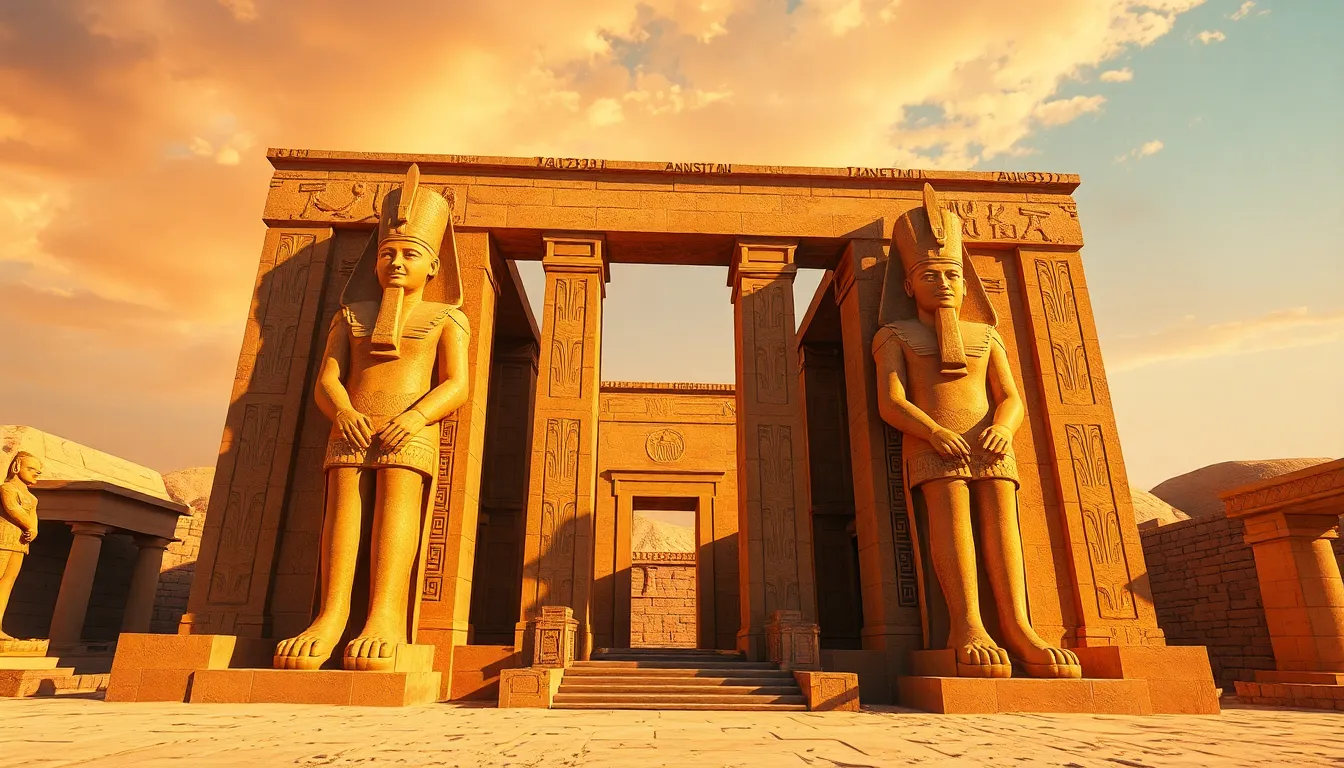The Myths of Pharaoh Ramses III and His Architectural Achievements
I. Introduction
Ramses III, one of the last great pharaohs of ancient Egypt, holds a significant place in the annals of Egyptian history. His reign, which lasted from 1186 to 1155 BCE, marked a time of both cultural flourishing and military strife. This article aims to debunk the myths surrounding Ramses III while highlighting his remarkable achievements in architecture and military leadership.
II. Historical Context of Ramses III
A. Brief biography and reign (1186-1155 BCE)
Ramses III ascended to the throne during a period of economic decline and external threats. He is often referred to as the last pharaoh of the New Kingdom, a time characterized by monumental construction and imperial expansion. His reign lasted for over three decades, during which he implemented various reforms and military campaigns.
B. Political challenges and military achievements
Ramses III faced numerous challenges, including invasions by the Sea Peoples and internal strife. His military campaigns are well-documented in inscriptions and reliefs, showcasing his strategic acumen and the strength of his army. Under his leadership, Egypt repelled invasions and secured its borders, ensuring relative stability for his people.
III. The Legend of Ramses III as a Warrior Pharaoh
A. Myths surrounding his military prowess
The image of Ramses III as an invincible warrior pharaoh has been romanticized in various historical accounts and popular culture. Many myths depict him as a larger-than-life figure who single-handedly led his armies to victory against overwhelming odds.
B. Actual military campaigns and their outcomes
- Ramses III’s most notable conflict was against the Sea Peoples, a confederation of naval raiders. He successfully defended Egypt in the Battle of Djahy, which took place around 1175 BCE.
- His military campaigns also included expeditions into Nubia and Libya, securing Egypt’s southern and western borders.
- Despite his victories, Ramses III faced significant challenges, including resource depletion and the eventual decline of centralized power in Egypt.
IV. Architectural Marvels Attributed to Ramses III
A. The Temple of Medinet Habu: Overview and significance
The Temple of Medinet Habu, located on the west bank of the Nile near Luxor, is one of Ramses III’s most significant architectural achievements. This mortuary temple complex is adorned with intricate reliefs and inscriptions that detail his military victories and divine favor.
B. Other notable structures: Mortuary Temple and palatial complexes
In addition to Medinet Habu, Ramses III commissioned several other monumental structures:
- The Mortuary Temple of Ramses III, which served as a place for worship and offerings.
- Palatial complexes in the city of Thebes, which showcased the grandeur of the royal lifestyle.
V. Myths vs. Reality: The Construction of Architectural Wonders
A. Misconceptions about labor and resources
One prevalent myth suggests that the construction of monumental structures like the Temple of Medinet Habu was solely achieved through slave labor. In reality, a significant workforce comprised skilled artisans, laborers, and craftsmen, many of whom were paid for their work.
B. The role of skilled artisans and laborers in ancient Egypt
These workers were not merely manual laborers; they were highly skilled individuals who took great pride in their craftsmanship. They were organized into teams and worked on projects as part of a communal effort, reflecting the sophisticated societal structure of ancient Egypt.
VI. Symbolism and Artistic Contributions in Ramses III’s Architecture
A. Iconography and inscriptions in his temples
The architecture of Ramses III is rich in symbolism and artistic expression. The temples he constructed are adorned with:
- Reliefs depicting his victories and divine protection.
- Hieroglyphs that narrate his achievements and contributions to the state.
B. The cultural significance of architectural designs
The designs of his temples reflect the theological and cultural beliefs of the time. They served not only as places of worship but also as centers of political power and cultural identity.
VII. The Decline of Ramses III’s Legacy
A. Myths about his downfall and the impact on architecture
While Ramses III is often portrayed as a tragic figure whose reign ended in turmoil, the reality is more complex. His death in 1155 BCE was likely the result of a palace conspiracy rather than a direct consequence of military failure or architectural decline.
B. Historical evidence of his lasting influence on future generations
Despite the challenges that followed his reign, Ramses III’s contributions to architecture and governance left a lasting imprint on subsequent generations. His temples continued to inspire later pharaohs and served as models for future architectural endeavors.
VIII. Conclusion
Ramses III’s reign was marked by significant achievements in military leadership and monumental architecture, yet it is often clouded by myths and misconceptions. By separating fact from fiction, we gain a deeper understanding of his contributions to ancient Egypt and the complexities of his legacy. The architectural wonders he left behind, along with his military prowess, solidify his place as one of Egypt’s most prominent pharaohs in history.




